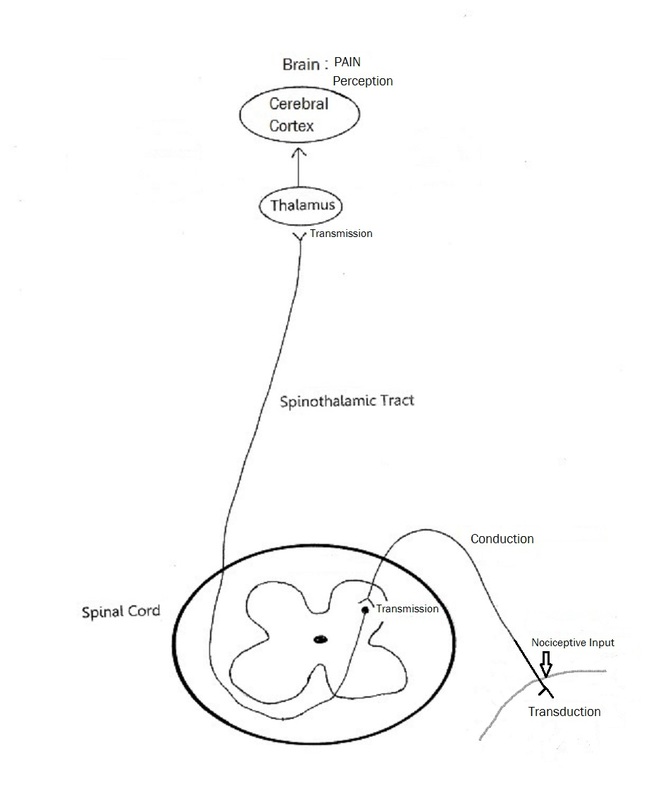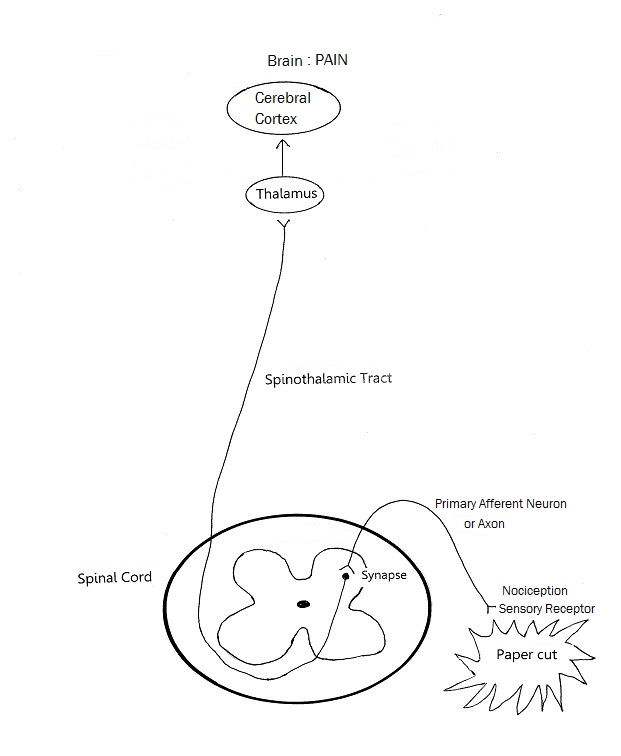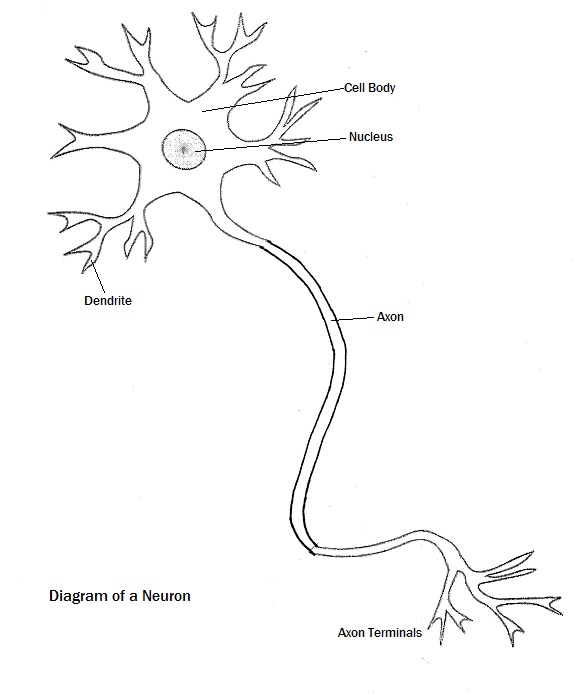In the last blog post, I introduced a few pain terms and basic neuroanatomy. Here are a few more:
1) Suffering: this refers to a person’s reaction to his pain perception. How and how much a person suffers is influenced by several factors such as his thoughts and beliefs, past pain experiences, how harmful he thinks the injury may be or may become, what kind of attention is drawn to the injury. This is why suffering may not be proportional to the nociception. Remember Bethany Hamilton (May 25, 2015 Blog post).
2) Pain behaviour is how a person’s suffering is communicated to others. This may be done through audible or visible actions. This is the pain information that is related, narrated or demonstrated by the person.
3) Transduction: this happens in the peripheral tissues when noxious stimuli are converted into electrical activity in the sensory nerve endings.
4) Sensory nerve endings: these are the ends of peripheral nerves; dendrites which lie far from the cell bodies of nerves.
5) Conduction: this is when the neuron carries the noxious information into the central nervous system.
6) Transmission: this is when nociceptive information is conveyed from one neuron to another through junctions called synapses. The primary afferent neuron carries the information to the spinal cord, where it synapses with a second-order neuron, which then carries the information on to the higher centres. This input or information is then routed to different areas of the brain (thalamus, cortex, limbic system)
7) Synapse: this is a junction across which a nerve impulse is passed from an axon terminal to another neuron, muscle cell, or gland cell.
8) Perception: the recognition and interpretation of pain by the brain. This is the beginning of suffering and pain behaviour, and it varies greatly between people.
1) Suffering: this refers to a person’s reaction to his pain perception. How and how much a person suffers is influenced by several factors such as his thoughts and beliefs, past pain experiences, how harmful he thinks the injury may be or may become, what kind of attention is drawn to the injury. This is why suffering may not be proportional to the nociception. Remember Bethany Hamilton (May 25, 2015 Blog post).
2) Pain behaviour is how a person’s suffering is communicated to others. This may be done through audible or visible actions. This is the pain information that is related, narrated or demonstrated by the person.
3) Transduction: this happens in the peripheral tissues when noxious stimuli are converted into electrical activity in the sensory nerve endings.
4) Sensory nerve endings: these are the ends of peripheral nerves; dendrites which lie far from the cell bodies of nerves.
5) Conduction: this is when the neuron carries the noxious information into the central nervous system.
6) Transmission: this is when nociceptive information is conveyed from one neuron to another through junctions called synapses. The primary afferent neuron carries the information to the spinal cord, where it synapses with a second-order neuron, which then carries the information on to the higher centres. This input or information is then routed to different areas of the brain (thalamus, cortex, limbic system)
7) Synapse: this is a junction across which a nerve impulse is passed from an axon terminal to another neuron, muscle cell, or gland cell.
8) Perception: the recognition and interpretation of pain by the brain. This is the beginning of suffering and pain behaviour, and it varies greatly between people.




 RSS Feed
RSS Feed